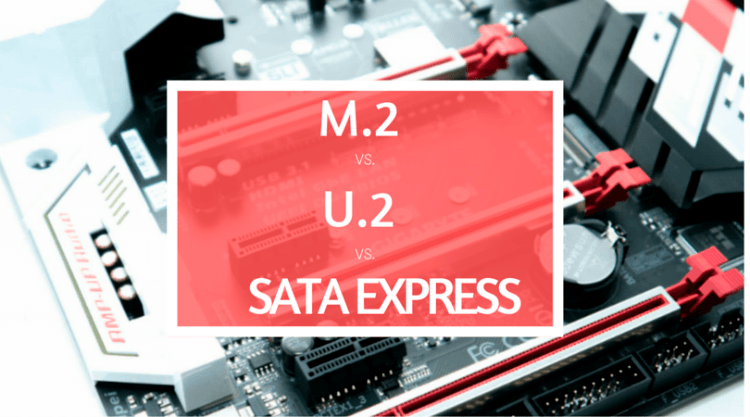Standard storage drives are only getting more and more complex as time goes on. They’ve basically replaced a standard hard drive with a more efficient storage drive that is also more durable. Each storage device needs to be supported by a computer bus interface, but what is the proper connector to use? It all depends on what kind of system the connector is used in, along with how high of performance you need from it. SATA connectors are still relatively new, with SATA Express just hitting the market back in 2013, followed by M.2 and U.2. Here is a quick recap of each component followed by how they compare to one another.
SATA Express
SATA Express was the true leader in the computer bus interface world that was able to support both SATA and PCI express storage devices. While SATA express has had its success on the individual consumer market, its performance levels are being outmatched by the newer interfaces. The key words here are individual consumer market. SATA express is still hanging on as a popular connector because of the fact that it is marketed for everyday life, while the newest components are being seen on the commercial market and trying to emerge onto the consumer level. Its limited use of only 2 PCI Lanes and 2 gigabytes per sec using the third generation make it a restricted option, but still simple and easy to purchase.
M.2
Pronounced M dot 2, it was actually released in the same year as SATA Express with a slightly different angle. This computer bus interface sees the advantage of packing a great deal of performance into just a 22mm wide by 110mm long package. This package also requires no cables which makes it even more useful in a small case. If you need an SSD for a portable, smaller system, this is the way to go. With up to 4 PCI lanes utilized, it already doubles the use of other connectors and holds the capability of performances of up 32 gigabytes per second. These massive benefits of M.2 make it seem as if it is the answer to every storage drive connector, but its physical imprint on the motherboard give it a bit of a subtraction sign. Overall the M.2 is available to consumers and ready to maximize performance.
U.2
The newest computer bus interface to hit the market, U.2 offers the most performance utilizing the most PCI lanes. It is also able to be stacked unlike any other connector and is able to adapt to the M.2. Basically, the U.2 can do everything any connector can do but hasn’t quite hit the consumer market yet. It’s been placed in the hands of commercial businesses and used as an alternative in the highest paced system. When this computer bus interface hits the consumer market in full force, it’s sure to take home the gold amongst its rivals.
How They Compare
This is a story of the computer bus interface family. We have the oldest fading out, the present going strong, and the youngest making an uprising. SATA Express just does not have the abilities and flexibility that M.2 and U.2 have. It’s limited use of PCI lanes and speed make it mainly just an affordable option for the individual consumer. M.2 has truly emerged as the dominant over SATA express and maximizes performance over it in almost every category. It is becoming more popular in the consumer market and is helping SATA Express fade out of its vital role. U.2 is the computer bus interface of the future and works with abilities that outweigh both SATA Express and M.2. Its limited market share in consumer devices, even among high-powered gaming systems, hasn’t allowed it to receive much press, but that will change very soon.
